How do you decide which crossover to buy – given how similar most crossovers look? Well, you have to look under the skin.
If you do, you’ll find some important differences.
Toyota’s RAV4, for instance, doesn’t have a tiny, turbocharged-to-make-up-for-it engine under its hood. And it doesn’t have a continuously variable (CVT) automatic bolted to it, either. That alone makes it different from most other crossovers – including the RAV’s chief rival, Honda’s CRV – which does come standard with a tiny, turbocharged-to-make-up-for-it engine, paired with a CVT transmission. 
There are some other big differences, too – including the RAV’s ability to pull a 3,500 lb. trailer. Not all RAV4 trims – but some. As opposed to others in the class – many of which (Like the CR-V) aren’t rated to pull half that.
If that.
So, the differences are there.
You’ve just got to look for them.
What It Is
The RAV4 is a compact-sized crossover similar to others in the same class, such as the Honda CR-V, Nissan Rogue and the slightly smaller Mazda CX-30 (and CX-5) It differs from others in the class in several key functional respects – as described above.
As well as a few others.
Prices start $27,575 for the base LE trim, in front-wheel-drive trim. All-wheel-drive is available as a stand-alone option. A top-of-the-line Limited with AWD, an 11-speaker premium JBL audio system and a 9 inch LCD touchscreen lists for $37,280. 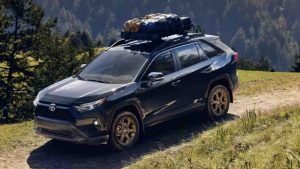
There are also Adventure ($33,770), TRD ($37,195) and Woodland ($33,025) trims in between. The TRD trim gets a number of functional upgrades meant to enhance this RAV4’s capabilities when the pavement ends, such as more ground clearance, a revised suspension with different shocks than other RAVs come with, selectable terrain drive modes plus chip-resistance fender flares and a more grippy set of tires mounted on wheels specific to this model.
This one also has a 3,500 lb. tow rating.
Some of these additional features – including the additional selectable terrain modes and fender flares – come standard in the Adventure trim, too. Plus the ability to decouple the rear axle (for better gas mileage when the AWD isn’t needed) and taller, higher-rated-capacity roof racks.
The Woodland trim combines some of those features with a hybrid gas-electric powertrain – and the capability to travel nearly 40 miles on a gallon of gas – in the city and on the highway.
The Woodland hybrid variant is new. It’s meant to offer buyers additional capability as well as fuel efficiency. A new/larger (12.3 inch) main gauge cluster is available in higher trims and standard in the Limited trim. All trims now come standard with with wireless AppleCarPlay and Android Auto.
In-car Wi-Fi with connectivity for up to five individual devices is available.
What’s Good
Something different, for a change.
Appropriately sized engine doesn’t need a turbo to make up for not being appropriately sized.
Class-best maximum tow rating.
What’s Not So Good
Heavy for its size (3,380 lbs. for the standard model w/FWD; 3,510 lbs. w/AWD).
No optional engine (or manual transmission).
Rival Mazda CX-30 offers an optional – much stronger – engine.
Under The Hood
Every RAV4 comes standard with a 2.5 liter four cylinder engine that isn’t turbocharged – because it doesn’t need to be. And the reason why it doesn’t need a turbo is because it’s big enough to not need one.
It makes 203 horsepower, not bad for a four. If you’re old enough to remember the ’80s – or even the ’90s – 203 horsepower was a respectable number for a 5.0 liter V8 in those days. But the more relevant number is vs. the much smaller fours in rival small crossovers such as the Honda CR-V and Nissan Rogue, which both come standard with 1.5 liter engines (a 1.5 liter three cylinder engine, in the Rogue).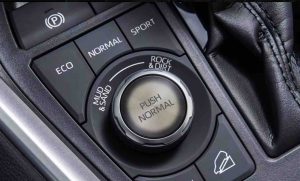
Both of these need a turbo – to make up for their small size. Without the boost, these little engines would be much too small – and underpowered – to propel a 3,000-plus pound vehicle. But even with the assistance of boost, neither makes more power than the RAV’s appropriately sized four. In fact, the Honda CRV’s 1.5 liter four makes noticeably less (190 horsepower). The Nissan’s heavily boosted three cylinder engine makes almost as much power as the RAV’s four – but how long will it make that power, being constantly under such pressure?
Interestingly, neither of these inappropriately small engines uses appreciably less gas – which you’d think would be the point of using such small engines vs. larger ones.
The RAV rates 27 city, 35 highway. The Honda CR-V, 28 city and 34 highway. The Rogue comes in at 30 city, 37 highway. These are differences without much distinction. The difference that may matter the most – down the road and long after the warranty has expired – is which of these engines is more likely to not be burning oil or in need of a new turbo as the miles accrue and the years go by. The Toyota’s four – which is the same four that’s standard in the Camry and other Toyota models – has established itself as 200,000-plus mile engine.
We’ll see about the others. Or rather, those who bought them, will.
One of the RAV’s other rivals – or rather, two of them, the Mazda CX-30 and CX-5 – also come standard with an appropriately sized engines. Also 2.5 liter engines – which for the same reason do not need a turbo to make enough power to adequately propel 3,000-plus pounds. It doesn’t make as much power (187 hp) but that can changed by adding a turbo, which Mazda offers in both CXs. Boosted, this engine makes a class-highest 256 horsepower.
The Mazda also does not come with a continuously variable (CVT) automatic transmission, just as the RAV4 doesn’t (non-hybrid versions). But the most it’s rated to tow – even with its stout 256 horsepower engine – is just 2,000 lbs.
If you buy the TRD version of the RAV, you’ll be able to use it to pull 3,500 lbs.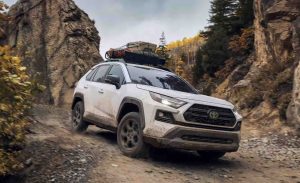
On The Road
You used to be able to get a RAV4 with a V6 – and a manual transmission. The V6 – Toyota’s excellent (bulletproof, endlessly durable) 3.5 liter V6 – turned the RAV4 into one of the Top Ten sleepers ever. A “sleeper” being a car – in this case, a crossover – that doesn’t look fast and that people assume is slow.
And then they discover it isn’t.
Unfortunately, Toyota stopped offering the V6 – not because buyers didn’t want it but rather because offering it hurt Toyota’s Corporate Average Fuel Economy (CAFE) numbers. CAFE being arbitrarily decreed mandatory MPG minimums, calculated using “fleet average” numbers. The presence of a V6 in the fleet lowered those numbers and that increased the fines, which get passed on to the customer in the form of higher costs. These costs made the V6 RAV4 too expensive to remain competitive – and so no more V6.
It’s the same as regards the manual transmission you can no longer get. This latter being kind of ironic because – properly driven – a manual-equipped car is usually more fuel efficient than the same vehicle with an automatic. But, a manual cannot be programmed for best performance (mileage-wise) on government test that determine fuel-efficiency ratings (and so, CAFE numbers) and that’s why all of the vehicles in this class are now automatic-only, including the RAV.
However, the RAV’s automatic is a conventional automatic; meaning it has gears and it shifts up and down through them. It does not have the unnatural feel – and the straining sounds – that often characterize CVT automatics. Which are common now for exactly the same reason V6s engines and manual transmissions are not. CVTs are slightly more “efficient” than transmissions with gears because CVTs are always in the right range.
Most of the RAV’s rivals – including the CR-V and the Rogue (though not the Mazda CXs) – come standard with CVTs.
That said, the RAV is heavy for its size.
This compact-sized crossover weighs around 3,300 lbs. for the FWD model (as detailed above). It could use more engine to make up for that. As a point of reference, a ’70s-era muscle car like my Pontiac Trans-Am weighs only a few hundred pounds more than an AWD-equipped RAV, but it has a 7.5 liter V8 to make up for all that weight.
A manual would also help to make up for it, by leveraging the available power more effectively.
Still, there is enough power for most driving. The power-to-weight imbalance only becomes apparent when you need more power to get all that weight moving faster. But at least there’s no CVT whine – and the RAV’s four is known to be all-but-indestructible, even if abused.
At The Curb
The RAV looks hunkier than others in this class – and it is.
The tested Adventure trim has an additional driver-selectable mode for Trails. It alters the eight speed automatic’s shift points to keep the engine’s torque up, which helps the RAV slog through mud and so on. (The hybrid has an EV mode that turns off the engine, with the battery pack powering everything.)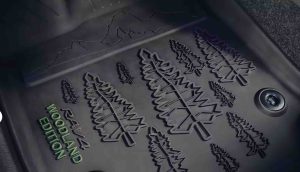
If you choose the TRD trim you’ll get a suspension lift as well as more suspension articulation. And a set of knobby tires to go with it. This equipment allows the RAV to handle terrain that might be too much for lower-to-the-ground, paved-road-intended crossovers like the CR-V, Rogue and CX-5 (which sits more than two inches lower to the ground) . It also gives the RAV the goods to make it a possible cross-shop for the Subaru Crosstrek, which – until now – was pretty much the only small crossover that was designed to cross-over things.
There are also lots of places to put things. Including two shelves built into the dash, on either side of the steering wheel. They are perfect for extra keys, phones, whatever. Also nice is being able to tune the radio (and adjust the volume) without having to tap or swipe. Ditto the controls for the climate control. Turn the knob for warmer (or colder) and the fan up (or down). That alone makes driving the RAV easier and far more pleasant than driving a car that forces you to try to aim your finger accurately at an icon on a screen and touch it just right while the car is moving.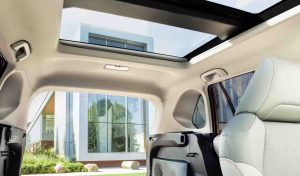
But the main reason crossovers – especially small ones, like this one – is on account of their practicality. Though the same size as a small sedan, a small crossover like the RAV has about five times as much cargo-carrying capacity, because of its shape – and because there is no divider between the passenger compartment and the cargo compartment. Even with the second row in place, the RAV has 37.6 cubic feet of space for cargo, which is more than twice as much space as in the typical small sedan’s trunk. Fold the second row down and the capacity expands to 69.8 cubic feet, which is just shy of five times as much space as you’d have to work with in the typical small sedan’s maybe 15 cubic foot trunk.
Hairs in the soup? None that stand out. And that is what makes Toyotas, in general, stand out. Rivals have strong points. Some have stronger points – as for example the Mazda CX-30 and CX-5’s available stronger engine. But they also have weaker points – as for example the Mazda CX-5 and CX-30’s much less total cargo capacity (59.3 cubic feet and 45.2 cubic feet, respectively) and very modest maximum towing capacity.
That general goodness is why the RAV is a perennial best-seller.
The Bottom Line
Toyota would probably sell even more of these things if you could still get one with a V6 – and a manual transmission.
It’s a shame the government won’t let them.
. . .
Got a question about cars, Libertarian politics – or anything else? Click on the “ask Eric” link and send ’em in! Or email me at [email protected] if the @!** “ask Eric” button doesn’t work!
If you like what you’ve found here please consider supporting EPautos.
We depend on you to keep the wheels turning!
Our donate button is here.
If you prefer not to use PayPal, our mailing address is:
EPautos
721 Hummingbird Lane SE
Copper Hill, VA 24079
PS: Get an EPautos magnet or sticker or coaster in return for a $20 or more one-time donation or a $10 or more monthly recurring donation. (Please be sure to tell us you want a magnet or sticker or coaster – and also, provide an address, so we know where to mail the thing!)
My eBook about car buying (new and used) is also available for your favorite price – free! Click here. If that fails, email me at [email protected] and I will send you a copy directly!




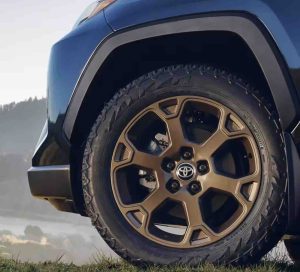
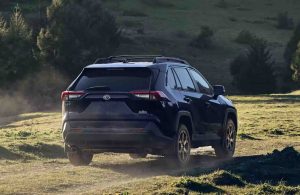







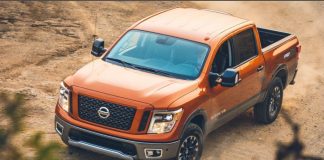
I feel better now. Just completed a bumper to bumper refresh of the well kept mailman’s backup 2005 Ford Escape V6 AWD mailmobile. Great shiny paint, 200 HP, 3500 pounds towing for the boat and computerized automatic 4×4 that owners say works really well. Into it for close to $5,000 including brand name all terrain tires. The $35,000 I saved will be used to add a $150.00 backup mirror/ camera and to make up for the 21 MPG vs 40 that the new Toyota gets. But then there is the federal, state and local tax break I gave myself. I must calculate that someday.
Excellent, Torino!
Keeping – and maintaining what we have (that’s better) is preferable to buying that which isn’t.
Is the RAV4 still smaller inside than its competitors…that’s one criticism I’ve seen in recent years.
Hi Bill,
Yes, a little – relative to the CR-V. But the thing has a lot of space inside. Both do.
More self driving car bs………;.
Lasers Can “Hack” Self-Driving LiDAR Sensors, Creating False “Blind Spots”, New Study Reveals
https://www.zerohedge.com/markets/lasers-can-be-used-disrupt-self-driving-lidar-sensors-creating-false-blind-spots-new-study
from zh comments…
Any laser used in this manner would not only have to be perfectly timed, but would have to move with the vehicle, the report says. “…………..Kind of like police speed traps?
I have noticed that my vehicle (not a Tesla), which has driver assistance features such as lane assist, adaptive cruise control, and other technologies used to prevent collisions can be interfered with by direct sunlight, strong shadows, crosswalks, and the lack of a leading vehicle directly in front.
My Lidar and laser jammers mess with the police and cars with lane detection.
Good radar detection with the above and it’s easy to go 200mph + on rural interstates roads.
The Cannonball run guys run the best equipment.
It costs money to speed
If you trust your laptop to drive your car for you, that same laptop that can be hacked and spoofed, gets viruses, crashes, loses data and has corrupt files, then you deserve your fate.
Bring back paper ballots and bring back human-driven cars!!!
My cell phone can’t even get auto correct right…
Tesla uses only cameras. And then ran into a white truck which drove before a white background.
Honestly as an engineer, the lidars were far more trustworthy. This article simply shows that’s even a misplaced faith.
I should be in the market for a new vehicle in the next year or two. I’ll only consider vehicles with no turbo or CVT, so the Rav4 (I own a 2012) and Mazda CX-5/CX-50 are on my list. Others like the Honda CRV and Nissan Rogue are not. I’m not crazy about the Rav’s looks and prefer the Mazdas. I’m curious why the TRD version has a much higher tow rating when it has the same engine as the others.
Wife finally bought a new 2022 Mazda CX-30 with all the options. She had told me that she was kind of tired of her 2010 Camry and wanted new, so off we went. First Mazda ever. She said it was the right size for her. I drove it about half-way back from Atlanta and it’s a bit squirrely. All the stupid safety features were on which the blind spot alert is useful in heavy traffic.
I had tried to convince her to stay with Toyota and look for a Rav4 but she was determined. We’ll see how things work out. I also like the HUD on the windshield of the mazda, that’s pretty ok except windshield replacement is about $1500 according to the dealer.
Hi Manse,
As it happens, I’m getting a ’23 CX-30 next week! It is a counterpoint to the RAV in that it leans sportier. More fun to drive fast. But not as practical (less cargo room) or capable (Mazda doesn’t offer equipment similar to the Adventure/Off-Road/Wilderness equipment available in the RAV). But it is available with the strongest engine in the class – 250 hp – and so equipped is much quicker than the RAV.
So, apples and oranges – and pros and cons!
Looking forward to the review! Think my wife’s has a ‘sport mode’? Not sure. I was trying to not get run over by any trucker on I-85. Much rather be sitting higher in my 4Runner on that drive.
I think the Mazda CX-5 and CX-50 are better direct comparisons to the Rav4.
Four cylinder, four cylinder. We’re all peasants now thanks to CAFE.
I just can’t get used to the idle shudder in gear from these things. You’re two cylinders short of a smooth idle. Kick it into neutral at the stoplights I guess.
Excellent, Eric – “The one I really miss, though, is the one
with the V6. Those things move. And no one suspects.”
A Subaru challenged me the other day – his problem. Pickup
trucks, with loud exhausts, are also on the surprise agenda.
Wouldn’t have the V6 without 4-wheel drive; FWD
couldn’t properly handle the power. For my use the functioning
of the 4-wheel drive is ideal – it’s automatically in 4-WD
until 25mph, then automatically disconnects, for fuel economy, etc.,.
Makes for perfect launches.
‘the RAV is heavy for its size’ — eric
Eric hits the nail on the head. The first-gen RAV4 (1995-2000) weighed around 2,600 lbs, on a 95-inch wheelbase. Then the 2nd-gen (2001-2005) packed on inches (98-inch WB) and 300 lbs or so.
Both were offered with 5-speed manuals. I own both, and prefer the first-gen for its wonderfully light, go-kart like driving quality, combined with decent ground clearance. If you’re used to current vehicles with severely-raked windshields, the first-gen RAV4 shocks with its old-school narrow, tall and more vertical windshield — almost like a 1950s truck.
Today’s fifth-gen, automatic-only RAV4 has expanded to a 106-inch wheelbase and a weight of 3,400 to 3,800 lbs, depending on features such as AWD and hybrid drive. That is, not a vehicle I would even consider, despite being a big fan of what the RAV4 once was, before (like a long-ago high school sweetheart) it packed on the flab and blimped out.
For what it’s worth, a buddy owns both a 2022 RAV4 hybrid and a Subaru Crosstrek. He says that the RAV4’s mileage advantage disappears over 65 mph. For all-day 80 mph interstate cruising, he prefers the Crosstrek … which, at least through 2023, has been available with a 6-speed manual. I’d opt for the Crosstrek if I were buying new.
I saw my first Corolla Cross in person in a parking lot recently, and that looks like an old RAV4.
The new RAV4 reminds me of what the Highlander used to be before it grew a foot and attempted to be a more comfortable 4Runner.
That’s hilarious, Roscoe!
Wish I’d thought of it first…!
I miss our 2002 4Runner a lot, but it wasn’t a vehicle made for driver comfort on long distance trips.
I drove ours from Florida to Oregon on a three day crash cross-country move about a decade ago, and my posterior was sore for a week.
We were pretty happy with the replacement, a 2016 Explorer, until we got the bill for a water pump replacement on the V6 engine. That’s yet another class action waiting to happen for Ford.
And, no, I still don’t know why we moved to Oregon/SW WA State.
I appreciate the weekly visits with Bill Meyer. The segments are always entertaining but, for me, hearing Bill’s tales from the occupied territory, they also serve as a regular reminder of why I should never consider going back.
Hi Jim,
My girlfriend has a second-gen RAV with the manual; it’s a much more agile and fun-to-drive ride than the new one. The one I really miss, though, is the one with the V6. Those things move. And no one suspects.
“Trails”, not off road. Go off road without a ladder suspension and you will eventually break the unibody. Sooner rather than later.
I’m sorry, I should have written “ladder frame” rather than “ladder suspension”.